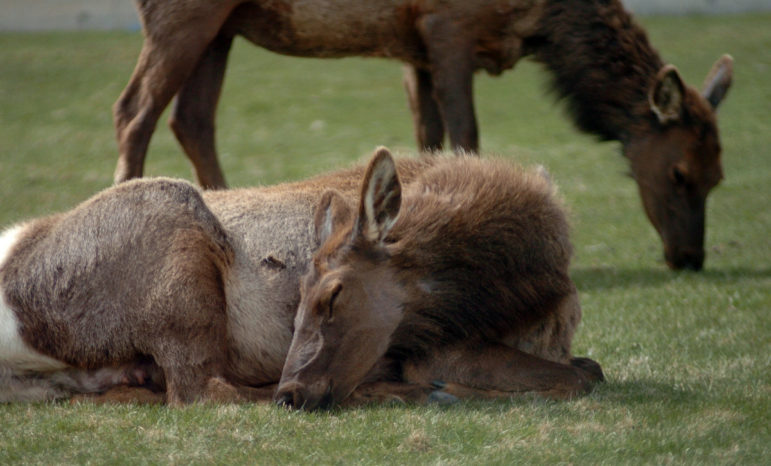
An elk snoozes while another grazes on a lawn in Mammoth Hot Springs in Yellowstone National Park.
Placid elk lounging around the lawns of Mammoth Hot Springs are a favorite attraction for Yellowstone National Park visitors. But the start of the fall rut means bull elk are much more aggressive toward both people and vehicles.
Several vehicles are damaged by elk every year and occasionally people are charged by elk and can be injured, according to a statement released by the park’s public affairs office.
Visitors and residents are asked to use caution when walking near elk and to look around corners before exiting buildings or walking around blind spots.
Park staff and volunteers can be seen patrolling areas like Mammoth Hot Springs when elk are present in an attempt to keep elk and visitors a safe distance away from each other. Park regulations require visitors to stay a minimum of 25 yards – the length of two regular school buses – away from most large animals and a minimum of 100 yards – the length of a football field – away from bears and wolves.
Area residents are reminded that during this period, it is not uncommon for bull elk to mock fight with many types of household items found in resident’s yards.
As a consequence, bull elk often get household items wrapped around their antlers. This can result in bull elk getting tied to each other, or to brush, trees, or other objects which can ultimately lead to their death.
Over the last few years, bull elk have had to be captured to remove extension cords, clothes lines, shrubbery, baskets, leashes, wire, nets, swings, hammocks, coaxial cable, and badminton nets (complete with poles) from their antlers.
During the fall rut, residents are asked to make an effort to remove all such items from their yards when not in use.
